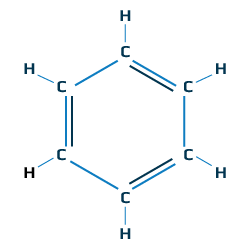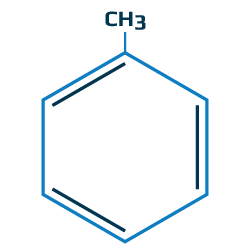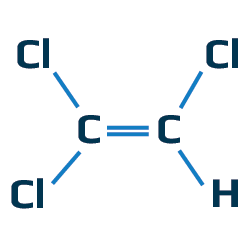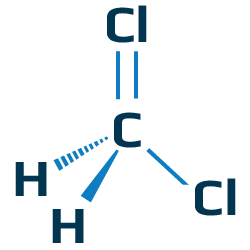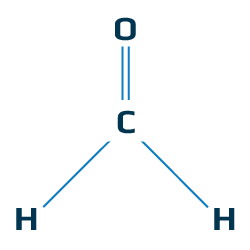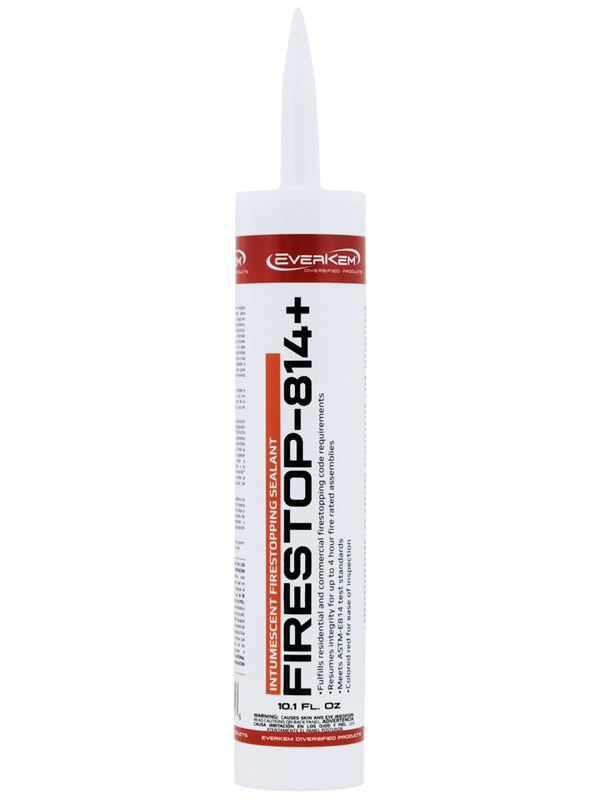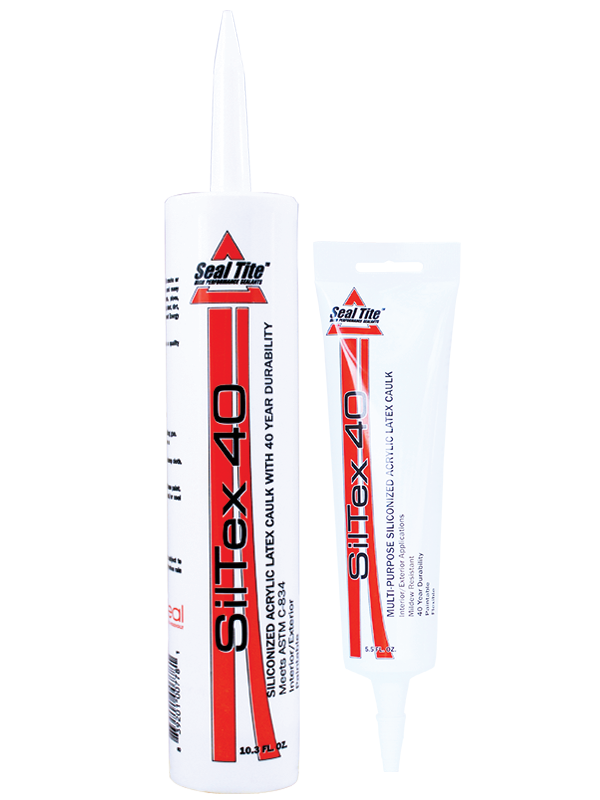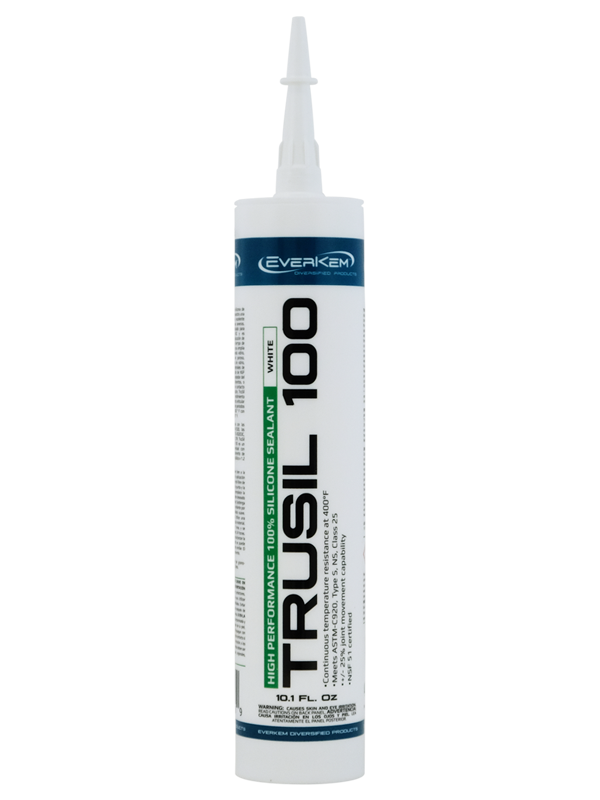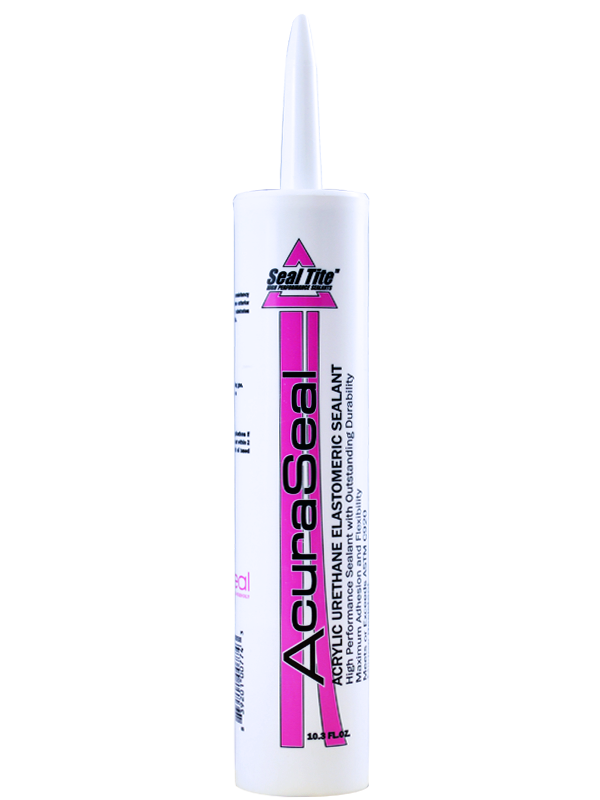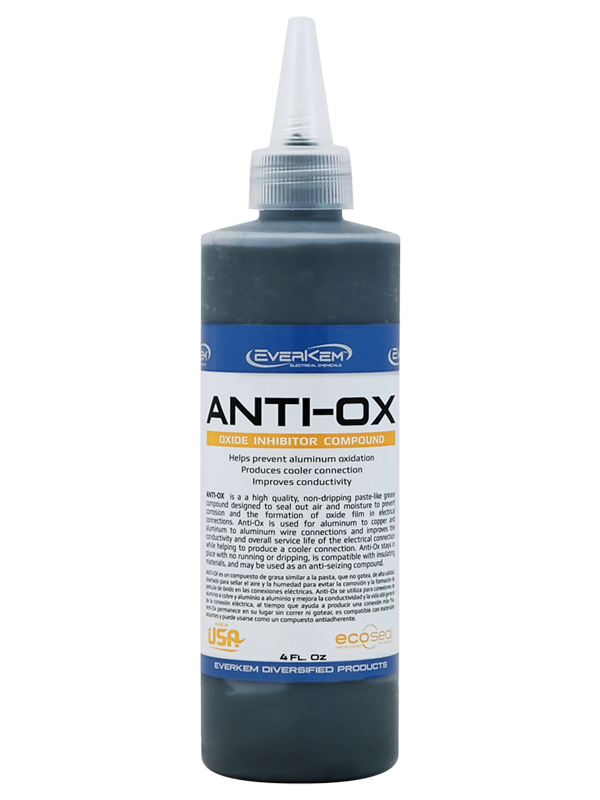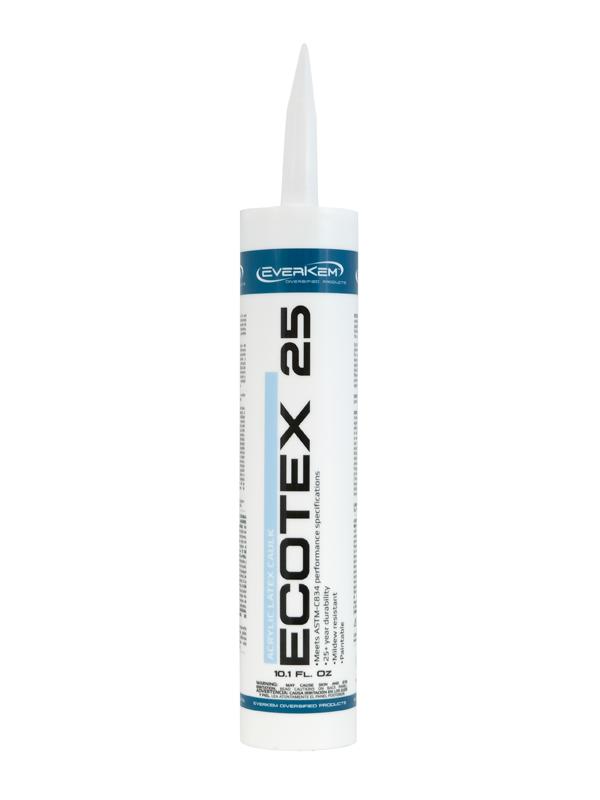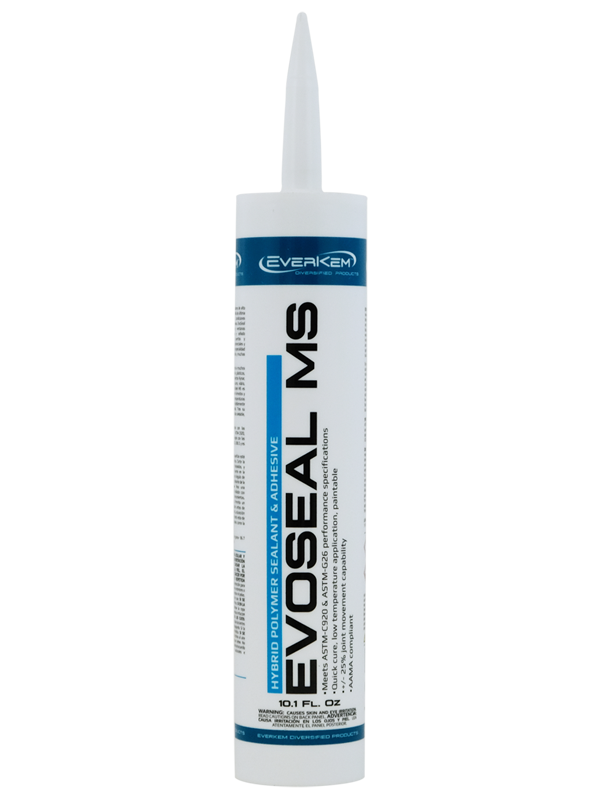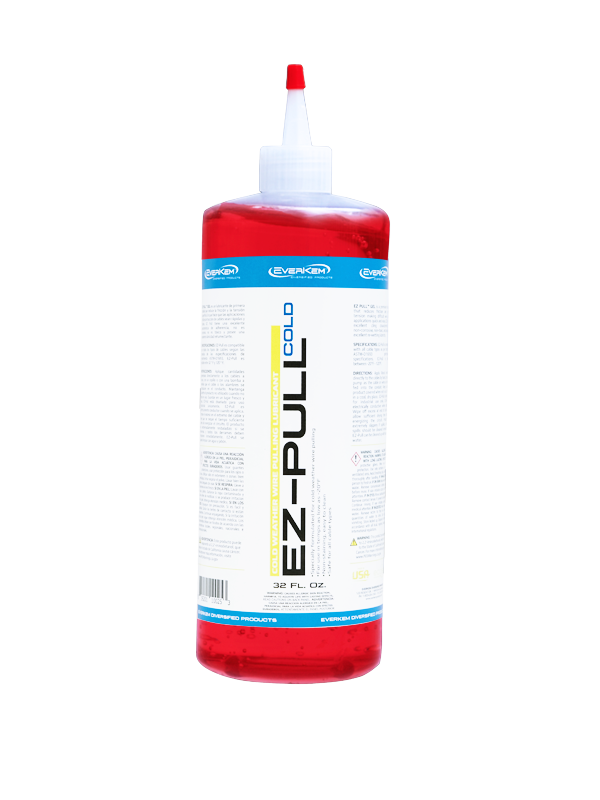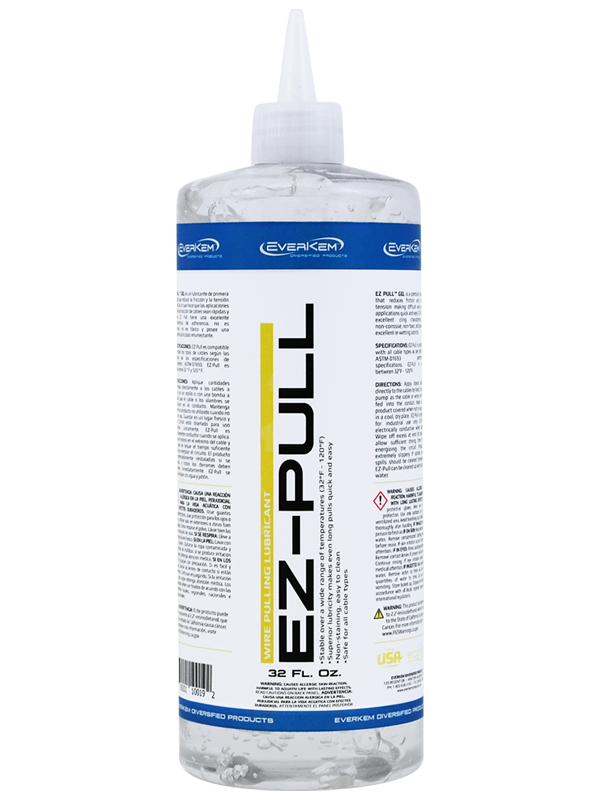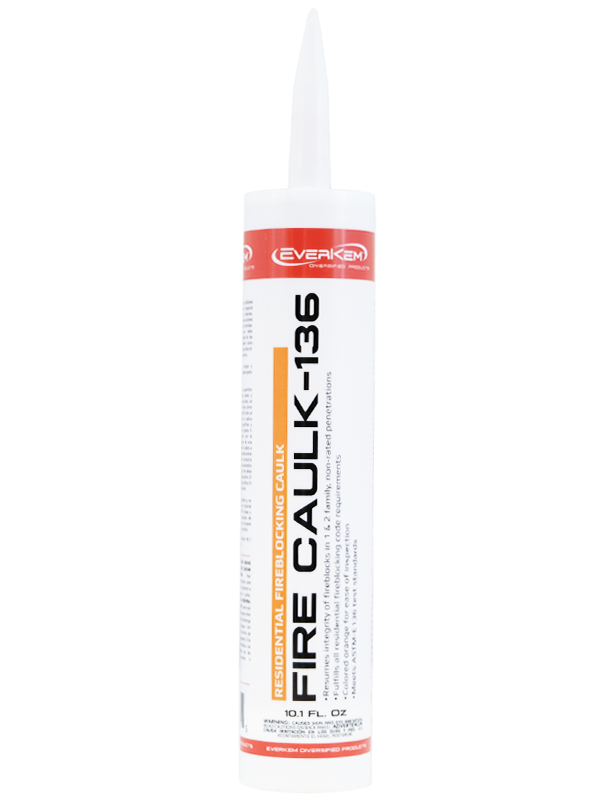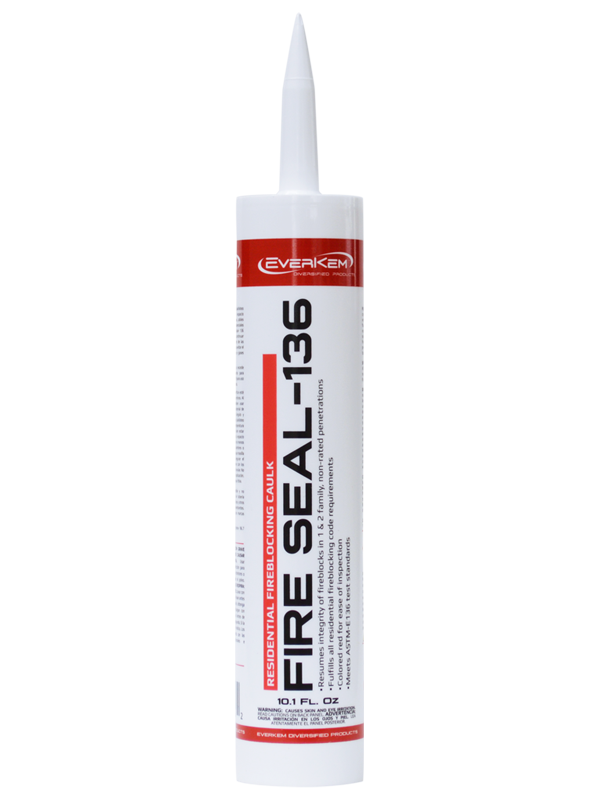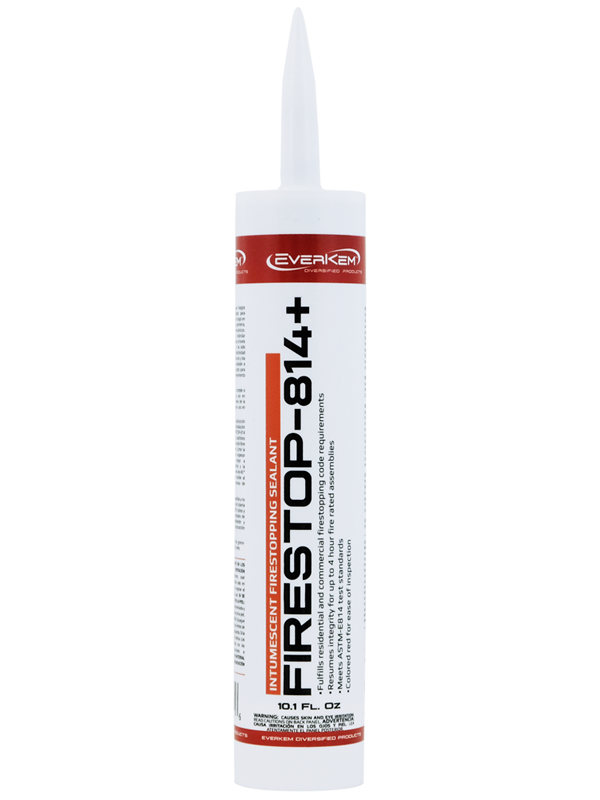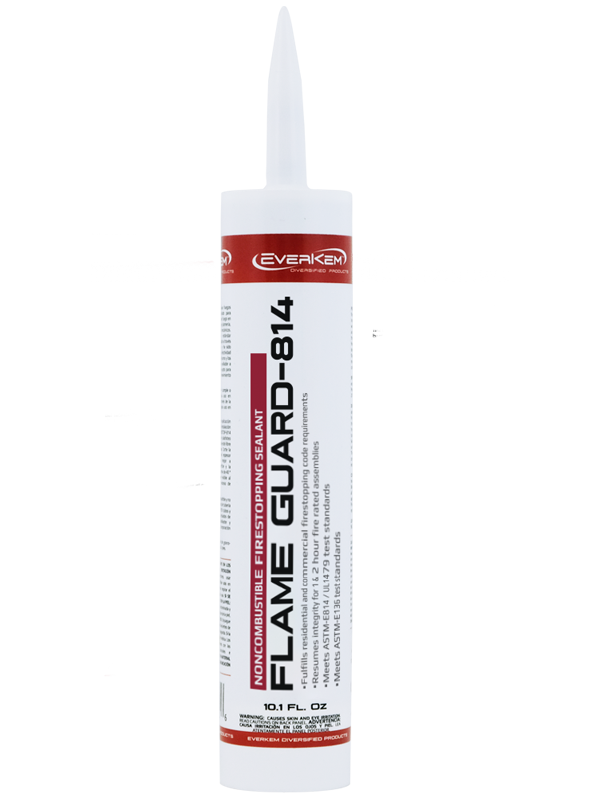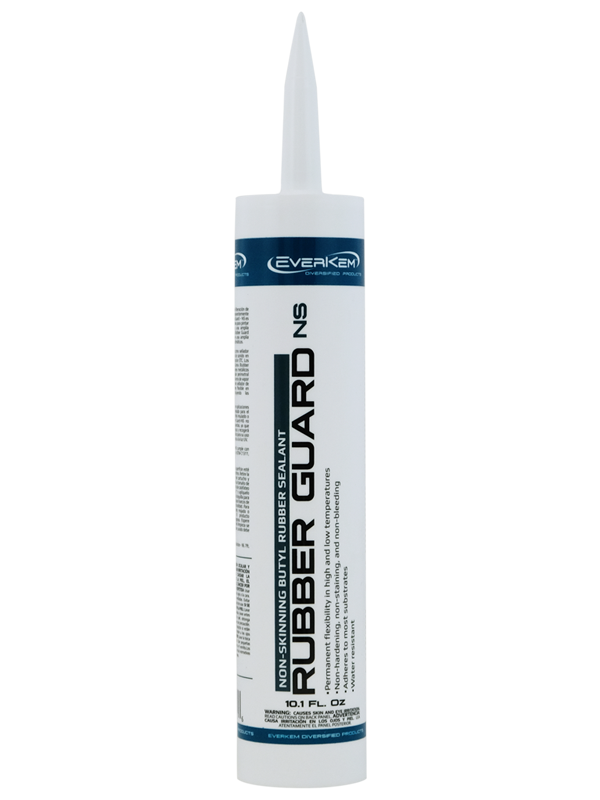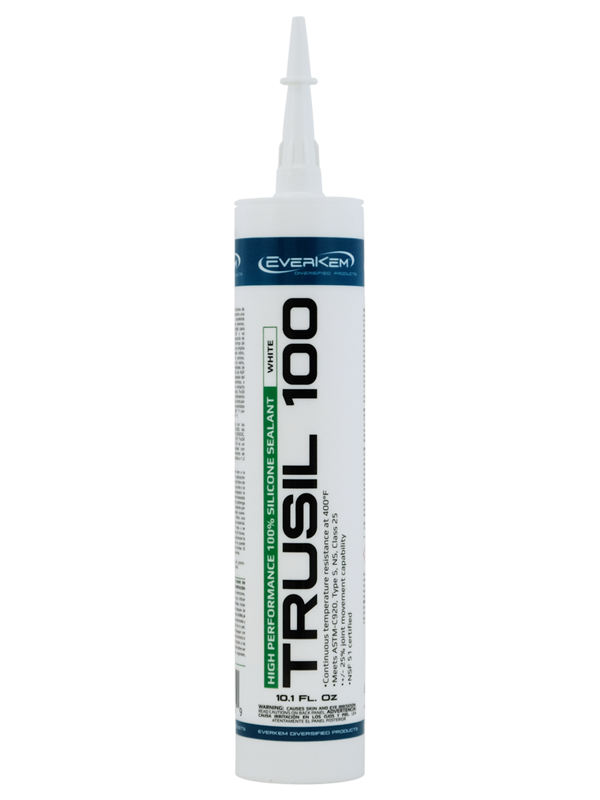VOCs IN THE BUILT ENVIRONMENT
Whether you’re a manufacturer, distributor, or installer of building products such as caulks and sealants, you’ve no doubt heard of Volatile Organic Compounds (VOCs). But, you may be unaware of what, exactly, they are and why such an emphasis is placed on limiting their presence within the built environment.
Volatile Organic Compounds are organic chemicals that evaporate into the atmosphere at room temperature. They are labeled as “volatile” because they have a low boiling point and a high vapor pressure, causing them to evaporate quickly at room temperature and turn into gases or vapors. They occur both naturally and through human activities. In nature, they form from plants, forest fires, organic decomposition, animal respiration, etc. Volatile organic compounds created by human activities occur from manufactured chemicals and products, many of which are commonly used throughout the built environment.
Building Materials | Home & Personal Care Products | Activities |
|---|---|---|
Paint, Varnishes, Paint strippers | Air fresheners | Smoking |
Caulks and sealants | Cleaning Products | Dry cleaning |
Carpet, Vinyl flooring | Cosmetics | Photocopiers |
Composite wood products | Moth repellents | Burning wood |
Upholstery and foam | Fuel oil, gasoline | Cooking and other hobby supplies |
In terms of pollution, we often think the air outside is worse than the air inside, and it’s not hard to see why. We see pictures of countries where people have to wear masks due to poor air quality. When we look at our own cities, we see the hazy smog, the smoke emitting into the air out of the smokestacks, and we can smell the exhaust from vehicles.
However, this is a misconception as the air inside can have up to five times more VOCs than the air outside, as homes and offices are enclosed spaces, allowing pollutants and VOCs to accumulate over time. Though some VOCs come from outside via car exhaust, building exhaust-kitchen and bathroom, etc., most pollution comes from sources already inside, such as adhesives, caulks, sealants, carpeting, manufactured wood products, and more
HEALTH
Factors such as the amount of VOCs in the air, length of exposure, pre-existing health conditions, etc., all play a role in how VOCs can affect our health. Those who are most susceptible to adverse effects are children, the elderly, active people, and people with pre-existing conditions. Animals can even be affected by VOCs, which can lead to many health conditions, even cancer. The severity of the symptoms depends on whether the exposure to VOCs was short-term, meaning hours to days, or long-term, meaning years to a lifetime. Short-term exposure can cause an array of symptoms such as eye, nose, and throat irritation, headaches, nausea/vomiting, dizziness, and worsening of asthma symptoms.If you are experiencing any symptoms, make sure you ventilate the area and, if possible, remove yourself from the space. If symptoms persist or become worse, seek medical attention.
ENVIRONMENT
It’s essential to know the impacts chemical products have on our health and the environment, but that’s only part of the picture. It is our responsibility as those involved in creating and maintaining the built environment to ensure that collectively we make, distribute, and install products that are safe for us and the world in which we live. VOCs impact your health indirectly through their adverse effects on the environment. Volatile organic compounds are a pollutant and contribute to the development of ground-level ozone, also known as bad ozone or tropospheric ozone. The ground-level ozone impact our health by exacerbating asthma and other lung conditions, such as bronchitis, and irritating the eyes, nose, and throat. At high concentrations, the ground-level ozone can cause premature death in children and individuals suffering from heart and lung disease. Beyond just our health, VOCs negatively affect the environment. The ground-level ozone reduces plant growth, leaving them vulnerable to pests and diseases. Ground-level ozone affects sensitive vegetation’s and ecosystems including, forests, parks, wildlife refuges, and wilderness area, which causes loss of species diversity-less variety of plants, animals, insects, and fish. It can also cause changes to the specific assortment of plants present in the forest, changes in habitat quality, and changes to the water and nutrient cycles.BENZENE
Benzene is a colorless or light-yellow flammable liquid chemical with a sweet odor. It’s a natural component of crude oil and gasoline – benzene’s sweet smell is partially responsible for the aroma around gas stations. Typically, benzene is used as an intermediate to make other chemicals, as benzene derivatives see widespread use in a wide array of chemicals and other products. These include, but aren’t limited to, adhesives, coatings, furniture wax, paints, and more.
Exposure to benzene lead to drowsiness, dizziness, rapid or irregular heartbeat, tremors, headaches, confusion, unconsciousness, or even death.
Benzene’s structure is a basic component in many organic compounds and is represented in diagram form by a ringed structure known as the Benzene Ring. In it, each carbon atom is also bonded to a hydrogen atom. The Benzene Ring serves as the fundamental structure on which many other volatile organic compounds are built and includes such derivatives as toluene and xylene isomers.
XYLENE ISOMERS
Xylene is any one or a combination of isomers of dimethylbenzene: meta-xylene (m-xylene), ortho-xylene (o-xylene), or para-xylene (p-xylene). All of these isomers are colorless, flammable liquids that have a slightly sweet smell. Xylenes are produced naturally in petroleum, coal, wood tar, and a small amount is produced during forest fires. They are primarily used as solvents in cleaning agents, paint thinners, varnishes, as well as a component in ink, rubber, and adhesives. Exposure to xylenes can cause dizziness, nausea, vomiting, headache, confusion, slurred speech. Exposure to high levels of xylenes can cause a loss of consciousness and even death.
TOLUENE
Toluene, also known as methylbenzene, phenylmethane, or toluol, is a flammable, clear and colorless chemical liquid with a sweet odor. Toluene is a natural component in crude oil and is used extensively in the manufacturing of benzene derivatives, caprolactam, saccharin, medicines, dyes, perfumes, TNT, polyurethane resins, and detergents. Exposure to Toluene can cause eye and nose irritation, tiredness, confusion, dizziness, headache, dilated pupils, anxiety, nerve damage, insomnia, liver and kidney damage, and more.
TRICHLOROETHYLENE
Trichloroethylene is a flammable liquid that is colorless and clear with a chloroform-like odor. Trichloroethylene is used in many industries for a variety of purposes, such as being used as an ingredient in adhesives, paint removers, and spot removers. It is also used as a solvent to remove grease from metal parts. Exposure to Trichloroethylene may cause eye and skin irritation, in high concentrations it can cause dizziness, headaches, sleepiness, confusion, nausea, unconsciousness, liver damage, death, and more
METHYLENE CHLORIDE
Methylene Chloride, also known as dichloromethane and methylene dichloride. It is a clear, colorless, and non-flammable liquid with a sweet odor. Methylene Chloride is in various industrial processes and industries, such as paint stripping, pharmaceutical manufacturing, paint remover manufacturing, and metal cleaning and de-greasing. Exposure to methylene chloride can cause death, cancer, skin irritation, eye irritation, and more.
FORMALDEHYDE
Formaldehyde is a colorless liquid chemical with a pungent odor. Formaldehyde occurs naturally in the environment. Humans and other living organisms make small amounts of Formaldehyde as part of metabolic processes. Formaldehyde is a fundamental building block chemical. As a result, it is in a variety of products and materials, such as glues, adhesives, permanent-press fabrics, paper product coatings, and certain insulation materials. Exposure to high levels of Formaldehyde can cause watery eyes, burning sensation in the eyes, nose, and throat, coughing, wheezing, nausea, and skin irritation.
GREENGUARD
Greenguard Environmental Institute is an industry-dependent organization that aims to protect human health and improve quality of life by enhancing indoor air quality and reducing exposure to chemicals and other pollutants. Products that have achieved GREENGUARD certification are scientifically proven to meet some of the world’s most rigorous third-party chemical emissions standards, helping to reduce indoor air pollution and the risk of chemical exposure.LEED (LEADERSHIP IN ENERGY AND ENVIRONMENTAL DESIGN)
The U.S. Green Building Council created LEED to define and gauge what the term green building meant, and provide a guide for developing sustainable buildings. LEED is a program for green buildings and communities worldwide. It is globally recognized and widely used rating system and a symbol of sustainable achievement and leadership. Certifications from LEED provide independent verification of a building or a neighborhood’s green features, permitting the design, construction, operations, and maintenance of resource-efficient, high-performing, healthy, and cost-effective buildings.HOW LEED WORKS
To get a LEED certification, businesses choose a project from a variety of categories. These projects earn points across nine basic areas which address key aspects of green buildings; these include integrative, location and transportation, sustainable sites, water efficiency, energy and atmosphere, materials and resources, indoor environment quality, innovation, and regional priority. By using compliant products throughout the project’s construction, the building/project accumulates points. Based on the number of points achieved, a project can earn one of four LEED rating levels: certified, silver, gold, or platinum. At Everkem, we have several LEED v4 compliant products, which can be used to acquire points for LEED ratings.OUR LEED V4 COMPLIANT PRODUCTS
After learning what VOCs are, their adverse effects on both us and the environment, and the steps that are taken to limit them in the built environment throughout construction, you may wonder what steps you can take on your own to reduce VOC concentrations in your home or workplace.
The U.S. Green Building Council’s (USGBC) LEED Green Building Rating System
National Association of Home Builders (NAHB) model GREEN Home Building
The South Coast Air Quality Management District (SCAQMD)
The Bay Area Air Quality Management District (BAAQMD)
Ozone Transport Commission (OTC)
California Air Resources Board (CARB)


